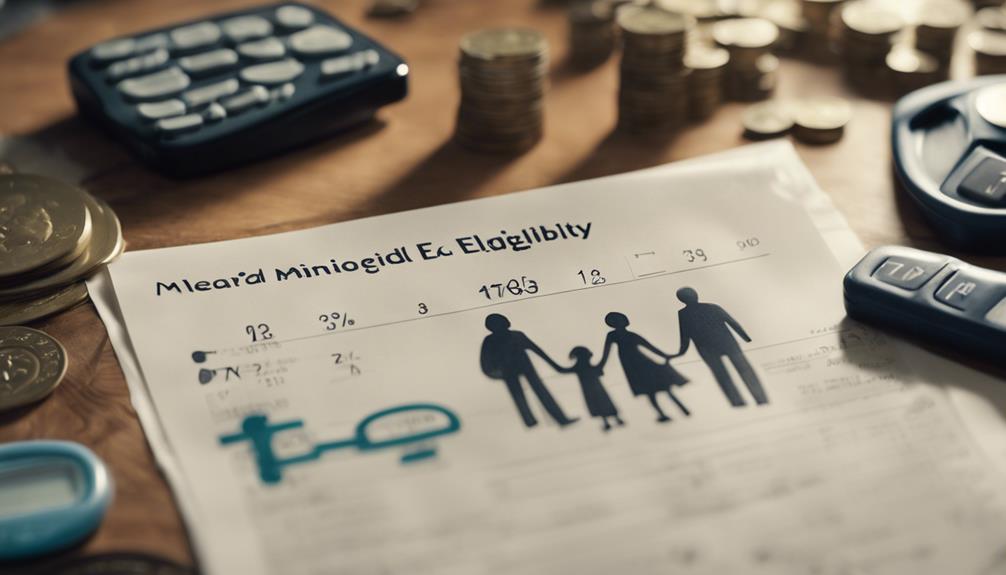
Navigating the world of Medicaid can feel like wandering through a maze, filled with twists and turns related to eligibility and asset requirements. Understanding what assets count towards Medicaid can empower you to make informed decisions about your finances and health care. Whether you’re planning for future needs or currently assessing eligibility, it’s essential to have a grasp on how assets impact your Medicaid coverage. Let’s embark on a joyful journey through the essential facets of Medicaid assets!
Unlocking Medicaid: What Assets Qualify for Coverage?
Medicaid is a lifeline for many individuals and families, providing essential health care services to those who meet specific income and asset criteria. But what exactly qualifies as assets under the Medicaid program? Generally, assets include cash, real property, personal items, and investments. The eligibility rules can vary greatly from state to state, adding an extra sprinkle of complexity to the equation. However, understanding these distinctions is key to unlocking the door to Medicaid coverage.
To qualify for Medicaid, applicants must demonstrate that their countable assets fall below a certain threshold. This means that not all items in your possession will count against you. The distinction between countable and non-countable assets can be significant, so getting a clear picture of what matters is essential for anyone considering Medicaid benefits.
The Joy of Understanding: Medicaid Asset Basics Explained
At its core, Medicaid is designed to provide for those with limited financial resources. By understanding the basics of Medicaid assets, you can find joy in gaining clarity about your financial situation. Countable assets typically include cash, bank accounts, stocks, and bonds. This means that while you may be able to enjoy a comfortable life, it’s crucial to be aware of what you own that impacts your eligibility.
In addition to cash and investments, certain assets are often considered non-countable, meaning they won’t impact your Medicaid eligibility. For example, your primary residence, personal belongings, and certain retirement accounts might not be counted against you. This delineation allows many to feel reassured and joyful about the possibility of qualifying for necessary health care services without losing everything they own.
Cash, Homes, and More: Assets That Matter for Medicaid
When it comes to cash, Medicaid takes a close look at your liquid assets. Any money in checking or savings accounts is counted, so it’s wise to keep track of your balances as you navigate the eligibility waters. A commonly overlooked fact is that cash gifts or inheritances could also affect your eligibility, making it important to plan ahead.
On the other hand, your home can often be exempt from asset calculations if you meet specific criteria, such as living there for a certain period or having a spouse residing in it. This means your cozy abode can continue to be your sanctuary, even as you seek Medicaid coverage. Understanding these nuances about cash and homes is vital for ensuring that you maximize your benefits while still enjoying the comforts of what you own.
Meet the Asset Test: What Counts Towards Medicaid Eligibility?
The asset test is the mechanism that determines whether an individual qualifies for Medicaid based on their financial situation. Each state administers its asset test differently, which can lead to variations in how assets are counted. It’s essential to familiarize yourself with your state’s specific regulations, as they directly influence your eligibility determination.
In general, the asset test evaluates both countable and non-countable assets to reach a final decision. This means that understanding the specific categories of assets that your state includes can lead you to better financial planning and ultimately a smoother application process. Being informed and proactive can help you successfully navigate this critical aspect of Medicaid eligibility.
From Jewelry to Savings: Navigating Medicaid Assets
Many people are surprised to learn that personal items, such as jewelry, can be counted among your assets when applying for Medicaid. While some states allow certain exemptions for personal property, others may include these items in their assessments. It’s essential to take stock of what you own and consider how it might be classified during the application process.
Savings accounts and investment portfolios also play a crucial role in determining Medicaid eligibility. Keeping your assets organized and understanding their implications can bring a sense of clarity and peace of mind. With careful management and planning, you can navigate the waters of Medicaid assets confidently, ensuring that you maintain your financial health while accessing the care you need.
Know Your Limits: Asset Caps for Medicaid Eligibility
Each state sets specific asset caps that determine how much you can own while still qualifying for Medicaid benefits. Understanding these limits is vital for anyone considering applying for Medicaid. For individuals, the cap usually hovers around $2,000, while couples often enjoy a more lenient threshold, allowing some flexibility in asset ownership.
Staying within these limits is crucial for successful Medicaid eligibility. This is where proper planning comes into play—by organizing your assets and possibly redistributing them within the scope of the law, you can increase your chances of qualifying for the benefits that best suit your needs. Keeping your assets in check can lead to a more carefree experience as you navigate your health care options.
Keeping It Cheerful: What You Can Keep with Medicaid
The good news is that even while managing your assets for Medicaid eligibility, there are several things you can keep! Medicaid regulations often allow for the retention of essential living items, such as your primary vehicle and household goods. This ensures that individuals can maintain a decent standard of living, even as they seek assistance with medical expenses.
Additionally, some states allow exemptions for certain retirement accounts and life insurance policies, giving you the freedom to preserve your financial future while still qualifying for Medicaid. Embracing what you can keep, rather than focusing on what you must give up, can foster a cheerful outlook on your financial situation!
Assets Made Simple: Your Guide to Medicaid Qualifications
Understanding Medicaid qualifications doesn’t have to be a daunting task. A clear and simple approach to categorizing your assets can illuminate the path to eligibility. Start by determining which of your assets are countable and which fall under the non-countable category. This will help streamline your application process and make it easier to ensure you meet your state’s requirements.
Moreover, consulting with a Medicaid specialist can provide additional insight and guidance tailored to your unique situation. With a little bit of help and a positive mindset, you can transform what once seemed complicated into a manageable and empowering experience on your journey toward Medicaid eligibility.
Medicaid & Your Wallet: Assets You Can’t Ignore!
As we delve deeper into Medicaid, it’s essential to remember that some assets can significantly impact your eligibility. High-value assets, such as real estate or investments, may be scrutinized even more closely. Awareness is key—knowing which assets are considered countable can help you make informed decisions about your financial planning.
Additionally, keeping your financial documentation organized and up to date will ease the process when applying for Medicaid. By being proactive about your financial health, you can ensure a smoother transition into Medicaid coverage, allowing you to focus on what truly matters—your well-being!
Celebrate Your Knowledge: Mastering Medicaid Asset Rules!
Congratulations on your journey to understanding Medicaid asset rules! Armed with this knowledge, you can now approach Medicaid eligibility with confidence and clarity. By mastering these concepts, you empower yourself to make informed decisions that reflect your needs and values.
In the grand scheme of things, navigating Medicaid doesn’t have to be a source of stress. With the right information and strategies, you can celebrate your financial journey while accessing the health care you deserve. So, don’t forget to share your newfound wisdom with others who might benefit—together, we can brighten the path to Medicaid for all!
In conclusion, understanding what assets count towards Medicaid does not have to feel like a daunting task. By breaking down the various categories, knowing your limits, and celebrating the things you can keep, you can simplify your journey toward Medicaid eligibility. Knowledge is power, and with the right tools and strategies, you can navigate Medicaid with a sense of joy and empowerment. Whether you’re planning for the future or currently seeking assistance, take pride in mastering these rules—after all, a cheerful approach can make all the difference!





